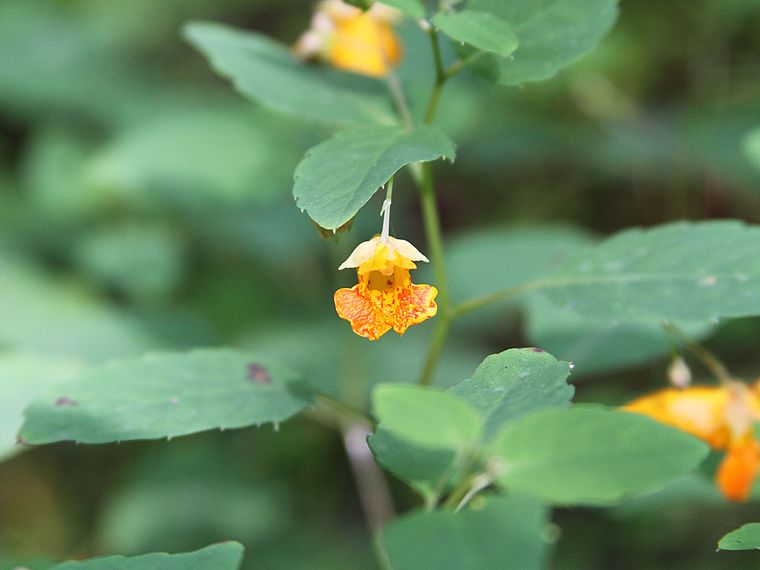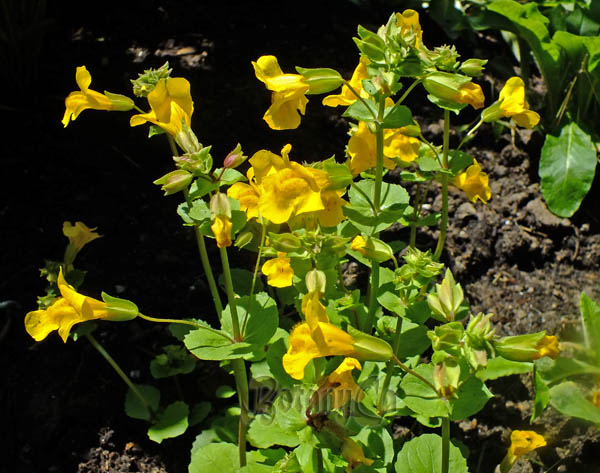Introduced species: Spotted jewelweed (Impatiens capensis)
Description: A far more common non-native Impatiens species than last month’s feature, spotted jewelweed is–as one might expect from a congener–similar in some respects, but different in others. This precociously-seeding annual reaches up to 1.5 m (5 ft), with coarsely-toothed, egg-shaped leaves (roughly 8 cm x 4 cm, or 3 in x 1.5 in) alternating on a succulent, somewhat translucent stem. When held underwater, the leaves take on a silvery appearance, hence the name “jewelweed.” Showy, tubular orange flowers, usually spotted on the inside, bloom around this time of year; they have a certain resemblance to a flugelhorn, or the speaker on an old phonograph, owing to the nectar spur at the back end. Hummingbirds and bumblebees will happily help themselves to the nectar, pollinating the flower in the process; this gives rise to an elongated seed pod that becomes highly touch-sensitive as the seeds ripen, allowing the plant to engage in “explosive dehiscence,” aka “ballistochory,” aka throwing its seeds some distance. Young shoots of the plant can be eaten after boiling in multiple changes of water (though large amounts are not recommended, owing to calcium oxalate in the plant–ALWAYS triple-check your identification before eating any wildcrafted plant). The aloe-like sap present in the leaves and stems can be useful in relieving skin rashes, including those induced by stinging nettle and poison ivy (though some people may have a negative reaction to the sap that makes the rash worse).
Spread: Jewelweed spreads exclusively by seed. Spotted jewelweed is native to eastern North America, but is now widespread in the Pacific northwest (as well as several areas in Europe, where it was also introduced).
Control: Like most annual plants, jewelweed is easily hand-pulled, due to its shallow root system. This is best done before it gets a chance to set seed, as it will spread prolifically if left to its own explosively dehiscent devices.
Native replacement: While there are several native Impatiens species in the Pacific northwest, they are not found in this area. An excellent native replacement for spotted jewelweed is monkeyflower (Erythranthe guttata, formerly Mimulus guttatus), whose showy, tubular yellow flowers are sure to be a hit with local bees!


